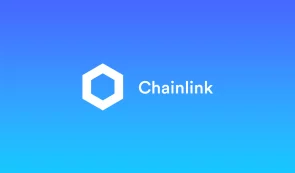What is Chainlink
Chainlink’s decentralized oracle network plays an important role in implementing blockchain technology. The purpose of this network is to provide information about various external data sources.
LINK is the native cryptocurrency of the Chainlink network, helping fund the project’s growth.
The oracle service facilitates better interconnectivity between smart contracts, which can then seamlessly access trusted data feeds, payments, APIs, and a wide range of other resources. In other words, ChainLink acts as an intermediary between systems outside and inside the chain.
The concept of a decentralized oracle essentially solves the most significant problem in creating smart contracts, i.e., centralized oracles.
History of ChainLink
ChainLink was created in 2017 by Sergey Nazarov, Steve Ellis, and Cornell University professor Ari Juels, and the network itself was officially released in 2019.
In 2018, Chainlink integrated Town Crier, a blockchain oracle that Juels also worked on. Town Crier connects Ethereum blockchain to web sources that use HTTPS.
Chainlink’s trademark was registered in the Cayman Islands in March 2013, and the corporation formed is Smartcontract Chainlink Sezc, Ltd.
In 2020, Chainlink integrated DECO, a Cornell project co-created with Juels. Its authors describe DECO as a protocol that uses zero-knowledge proofs (ZK-proof) to allow users to prove that information is correct on the blockchain oracle without revealing sensitive information, such as birthdates.
In April 2021, Chainlink published a second white paper, ChainLink 2.0: The Next Step in the Evolution of Decentralized Oracle Networks, which details a vision for expanding the role and capabilities of decentralized oracle networks to include hybrid smart contracts that leverage on-chain code and off-chain services.
ChainLink architecture
The Chainlink blockchain uses different nodes to receive the data required for smart contracts. However, these nodes reach a specific consensus before transmitting the data to the smart contract. As a result, the contract itself need not depend on a single centralized oracle.
Furthermore, Chainlink nodes can retrieve data once or repeatedly. The two important components in Chainlink are the on-chain and off-chain components. Let us understand more about these components and their importance.
On-chain components
On-chain components mainly refer to the oracle contracts based on the Ethereum blockchain that help monitor and process user data requests.
On-chain components transfer off-chain data requests to the Chainlink network to facilitate their processing in native blockchain contracts. The contracts can then match the requests with the corresponding oracle services. You can find three distinct parts of the Chainlink contracts:
- Reputation Contract
- Aggregation Contract
- Order Matching Contract
Each contract fulfills a separate role and drives the desired functionality of the Chainlink blockchain. The Reputation Contract helps document the performance metrics of oracle service providers while monitoring their success rates. The aggregation contract collects responses from the oracle service providers, then calculates the final answers to the initial questions. In addition, the order matching contract plays an important role in registering the users’ offers in the network and collecting offers from the oracle providers.
Off-chain components
Off-chain components are the next significant aspect in answering the question “What’s so great about ChainLink?” as they include oracle nodes outside the chain. Such nodes could help in collecting responses to various external queries.
Where is the destination to process all the data? Chainlink Core helps connect the blockchain to off-chain data resources. It is essentially a device that supports the transformation of data off-chain, followed by its transfer to an oracle on-chain. All individual responses are then aggregated through various consensus mechanisms before being transformed into a single global response.
Off-chain nodes can receive compensation in the form of the LINK cryptocurrency.


